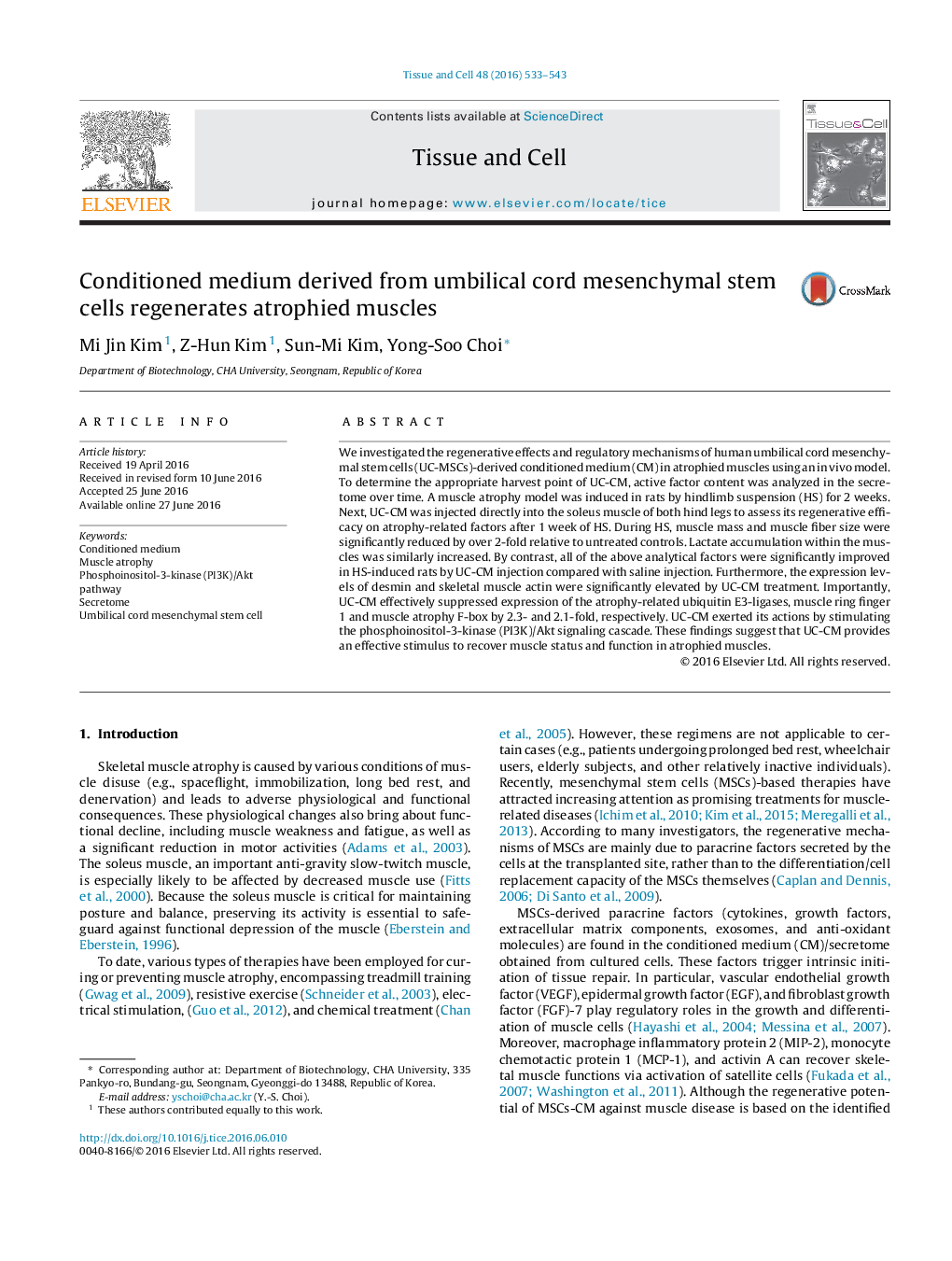| Article ID | Journal | Published Year | Pages | File Type |
|---|---|---|---|---|
| 5535106 | Tissue and Cell | 2016 | 11 Pages |
â¢We exmained paracrine effect of MSCs on atrophied muscles using an in vivo model.â¢Active factor content in MSCs-CM was analyzed to determine appropriate harvest point.â¢MSCs-CM suppressed atrophy-related ubiquitin E3-ligases, MuRF-1, and MAFbx.â¢MSCs-CM could regenerate muscle mass and proteins in atrophied mucles.
We investigated the regenerative effects and regulatory mechanisms of human umbilical cord mesenchymal stem cells (UC-MSCs)-derived conditioned medium (CM) in atrophied muscles using an in vivo model. To determine the appropriate harvest point of UC-CM, active factor content was analyzed in the secretome over time. A muscle atrophy model was induced in rats by hindlimb suspension (HS) for 2 weeks. Next, UC-CM was injected directly into the soleus muscle of both hind legs to assess its regenerative efficacy on atrophy-related factors after 1 week of HS. During HS, muscle mass and muscle fiber size were significantly reduced by over 2-fold relative to untreated controls. Lactate accumulation within the muscles was similarly increased. By contrast, all of the above analytical factors were significantly improved in HS-induced rats by UC-CM injection compared with saline injection. Furthermore, the expression levels of desmin and skeletal muscle actin were significantly elevated by UC-CM treatment. Importantly, UC-CM effectively suppressed expression of the atrophy-related ubiquitin E3-ligases, muscle ring finger 1 and muscle atrophy F-box by 2.3- and 2.1-fold, respectively. UC-CM exerted its actions by stimulating the phosphoinositol-3-kinase (PI3K)/Akt signaling cascade. These findings suggest that UC-CM provides an effective stimulus to recover muscle status and function in atrophied muscles.
